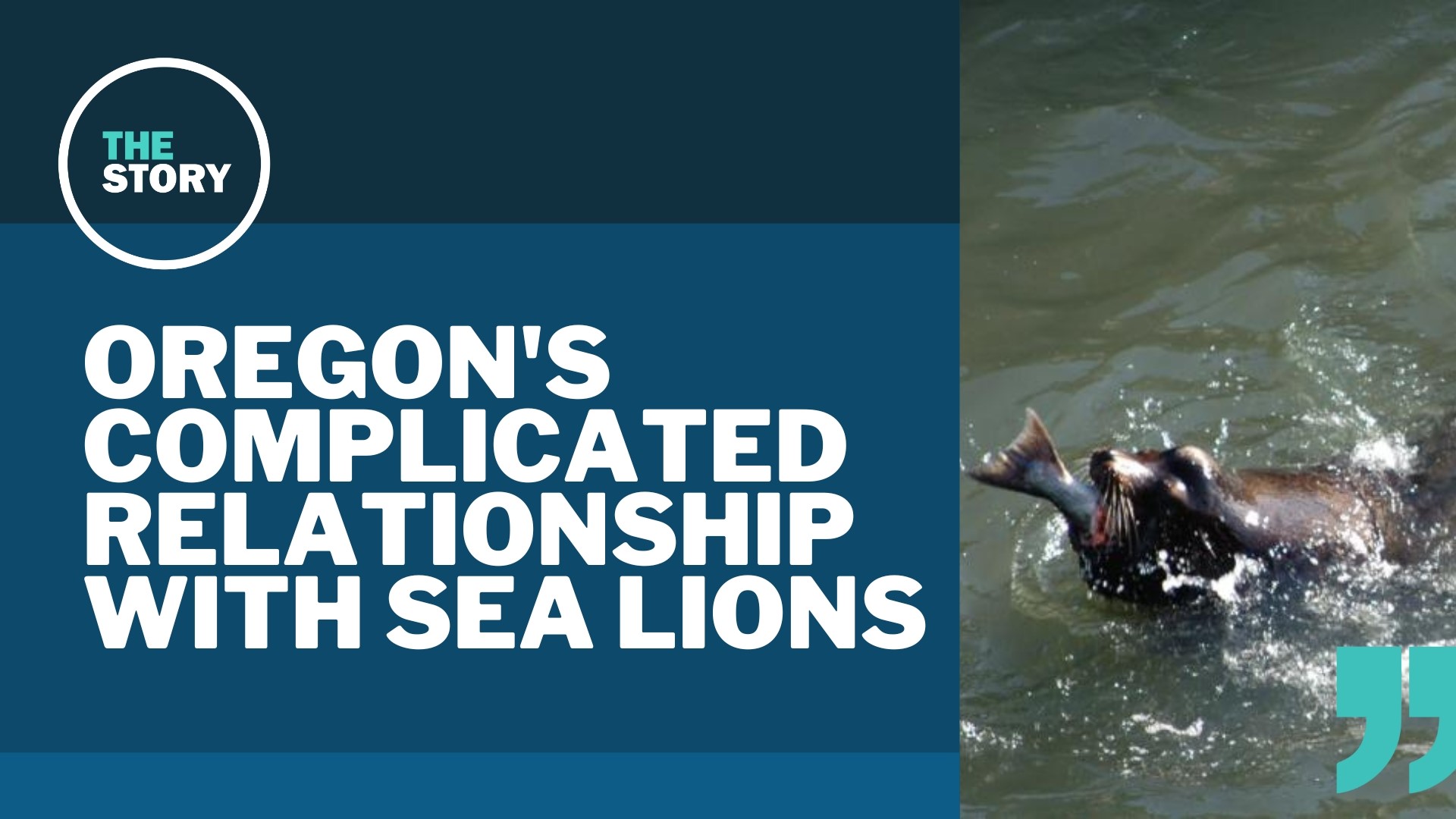PORTLAND, Ore. — Last week, KGW reported on video captured on the Columbia River near Hayden Island that showed a boater deliberately veering toward groups of sea lions, seemingly trying to hit or harass the creatures.
Many people were outraged at the video, though the boater also had their share of defenders.
That dichotomy mirrors the pinnipeds' legal status. Sea lions are federally protected under the Marine Mammal Protection Act— making it illegal to harass, hunt or kill any marine mammals. But at the same time, Oregon wildlife officials have used exceptions in the law to kill hundreds of sea lions over the past few years.
While sea lion populations in the Pacific Northwest have soared in recent decades, salmon and steelhead numbers have not. And sea lions' voracious appetite for salmon is the issue at hand.
Many of the fish that sea lions eat are among 13 threatened and endangered runs protected under the federal Endangered Species Act. And groups of sea lions have taken to simply waiting at the Bonneville Dam, Willamette Falls and other pinch points where the fish gather as they struggle to make their way upriver to spawn.
The Oregon Department of Fish & Wildlife estimates that sea lions eat up to 44% of the Columbia River spring Chinook run and 25% of the Willamette winter steelhead run each year. The creatures are a huge headache to people who fish — sometimes snatching salmon right off their lines as fishers reel them in.
The competition for a dwindling resource means that many fishers have come to resent sea lions. Michael Brady, a Portland man who captured the video of a boater harassing sea lions last week, told KGW that he has been fishing since he was young and once fished for a living.
"I see both sides of it. I understand the frustration. I understand this year is tough on salmon. Lower coast, I think, is even closed for some people,” Brady said. “But I think this was a sport fisherman who had a little chip on his shoulder, and it was terrible to witness as a community here."
Despite having a clear impact on returning fish, it isn't as if sea lions are solely responsible for the precipitous decline and near-collapse of some populations. Experts point to drought and low water levels in some vital West Coast rivers, the obstacles posed by hydroelectric dams, pollution of wastewater with "chemicals of emerging concern," and — barring a shutdown like federal regulators instituted this year for Chinook salmon along most of the West Coast — the impact of commercial fishing.
Oregon's sea lion 'removals'
The Marine Mammal Protection Act was amended in 1994 to allow for states to apply for lethal removal authority under narrow circumstances. And in 2018, Congress amended the act again to allow for more flexibility in killing sea lions at chokepoints like dams and falls.
"Removal" or killing of sea lions has been going on at the Bonneville Dam since 2008, and it started at Willamette Falls a decade later. For a few years, repeat offenders were branded with a hot iron in order to track how many times they were a problem at the dam before they were killed.
Killings sea lions wasn't the first course of action. Wildlife officials originally tried all kinds of non-lethal methods, or "hazing," to deter the animals. They tried exclusion gates, using fireworks, firing rubber buckshot from 12-gauge shotguns.
For a time, Oregon even tried caging sea lions and driving them over 100 miles back to the coast. In several cases, transported sea lions were right back at the lunch counter in just a matter of days, so state officials stopped bothering with that option.
ODFW said that they first trap the animals, then pursue one of two options. The first is to have the creatures placed at an accredited zoo or aquarium. But if no facility is available, the sea lions are taken to an indoor facility and chemically euthanized by a veterinarian. Wildlife officials also have the authority to tranquilize sea lions with a dart before euthanizing them.
Until 2020, sea lions could only be killed if they were gathering at the Bonneville Dam or Willamette Falls. But now, the federal government has issued a permit to Oregon, Washington, Idaho and six regional tribes to kill the animals in certain zones across the Columbia River Basin — stretching from the I-205 bridge to east of Umatilla — as well as any tributary of the Columbia where endangered fish species spawn.
These zones include locations where endangered salmon and steelhead, sturgeon and lamprey are especially vulnerable. ODFW said that removing sea lions was a significant factor in 2020 for the best return of wild Willamette steelhead in years, after biologists believed the species was on the verge of extinction.
Nearly 400 sea lions have been killed by wildlife crews in Oregon since removals began — 277 before 2020, and 99 since then. In an email, ODFW told KGW that they will begin trapping more sea lions later this month at both the Bonneville Dam and Willamette Falls.
Efforts to stop the state from killing sea lions have fallen short. The Humane Society of the U.S. sued in 2008 but lost in court.

